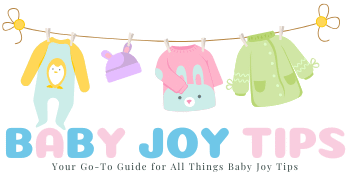Has your formerly easy-going baby all of a sudden turned into a fussing, hungry little animal that you can’t put down? You may be going through one of the well-known baby growth spurts – those wild times when your baby developmentally shifts into “high gear” seemingly overnight. These times are perfectly normal, but can wear down even the most prepared parents.
What Are Baby Growth Spurts?
There are specific times in your baby’s life when that baby is undergoing fast physical growth and generally has behavior changes, and we refer to those times as baby growth spurts. Your baby’s body takes a lot of energy to create new cells, grow muscles, and develop neural pathways in the brain.
The Science Behind the Spurt
Growth spurts are more than just a series of changes. They involve changes in the way hormones are manipulated and the outset of rapid cellular reproduction or bone growth. Your baby’s brain is undergoing simultaneous rapid growth, creating new neural pathways to develop cognitive (remembering, thinking, learning) and physical abilities. Therefore, it is normal and expected for babies to require more sleep, food, and comfort during a growth spurt!
Timing: When Do Baby Growth Spurts Usually Occur?
Even though all babies have their individual pace of development, studies indicate some times during which a growth spurt typically occurs :
- 7-10 days after birth
- 2-3 weeks
- 4-6 weeks
- 3 months
- 6 months
- 9 months
Usually, these periods are meant to coincide with developmental leaps in terms of cognitive awareness and physical abilities. After the first year, growth spurts are not as common, but they continue throughout the childhood years after their first, babyish growth spurts.
How Long Do Growth Spurts Last?
Most baby growth spurts last between 2-7 days, though some particularly challenging ones might stretch to two weeks. Remember, this intensity is temporary – though it may not feel like it at 3 AM!
8 Common Signs of Baby Growth Spurts
Recognizing the signs of growth spurts can help you respond appropriately to your baby’s changing needs:
1. Increased Hunger
During growth spurts, many babies show insatiable hunger, sometimes called “cluster feeding.” Your baby might:
- Want to nurse or take a bottle more frequently
- Feed for longer periods
- Seem hungry immediately after feeding
For breastfeeding mothers, this increased demand actually helps boost your milk supply to meet your baby’s growing needs.
2. Disrupted Sleep Patterns
Baby development stages often come with sleep regression. Your previously solid sleeper might:
- Wake more frequently
- Resist naps
- Need more soothing to fall asleep
- Wake up crying and be difficult to settle
This disruption happens because growth hormone production peaks during sleep, and your baby’s growing body and brain may experience discomfort.

3. Heightened Fussiness
Nearly all babies that are normally calm will experience fussiness at some point during their growth spurt. This fussiness is due to physical discomfort, hunger, tiredness, and the frustration of new feelings they do not yet know how to interpret.
4. Increased Cleanliness
Some babies want to be held just about all the time during a growth spurt, and often exhibit clingy behavior. Cleanliness and excessive physical contact are normal ways for babies to find comfort during confusing times of change.
5. Changes in Physical Development
Take note of markers of visible baby growth during these times :
- Baby suddenly outgrows clothes
- Growth spurts result in visible weight gain
- New physical actions (rolling, reaching, making attempts at crawling)
- Change in facial features as baby gets “filled out”
6. Developmental Leaps
Growth spurts typically happen with cognitive advancements :
- Heightened awareness of environment
- New social skills (ex. smiling or laughing)
- Attempts to perform new movements
- More focused on objects or faces
7. Changes in Diaper Output
As baby is eating more, you’ll likely see more wet and dirty diapers. This is a good sign, as baby is getting the nutrition they need during their growth spurt.
8. Increased Drooling and Being Mouthy
Many parents note a change in oral fixation during growth stages which may also be matched by transitioning to early teething behavior.
6 Proven Strategies for Surviving Growth Spurts
While you can’t prevent growth spurts, these growth spurt tips can help make them more manageable:
Feed on Demand
Follow your baby’s hunger cues rather than the clock during growth spurts :
- For breastfed babies: Offer the breast whenever baby seems hungry
- For bottle-fed babies: Be prepared to increase feeding amounts slightly
- Stay hydrated if breastfeeding, as your body works to produce more milk
Sleep Matters (Yours and Baby’s)
Sleep becomes a commodity during growth spurts :
- Begin a newborn sleep routine with bedtime rituals
- Try settling techniques for newborn sleep, such as swaddling, gentle rocking, or white noise
- Think about no-cry newborn sleep options, like motion sleep (e.g., stroller or carrier naps)
- Accept support so that you can nap when it is possible You are allowed time!
Lower Your Standards
With growth spurts, simplify your list of priorities :
- Get takeout or make quick meals within your (many) kitchen appliances
- Let non-essential things around the house slide.
- Ask if social engagements can be delayed.
- Focus on simple care for you and your baby.
Comfort First !
During growth spurts, babies need extra support :
- Increase skin-to-skin time
- Try baby sleep training that does not hold the CIO approach and keeps the connection
- Baby wear with a carrier for hands-free comfort
- Make a smaller, quieter environment with reduced stimulation if baby appears overwhelmed
Document Patterns
Keeping a simple log of feeding, sleep, and behavior could help show a pattern :
- Record dates, behaviors, and duration
- Note any new skills developed after these periods of difficulty
- Use your notes to inform you of future growth spurts

Connect with Support
Growth spurts can feel isolating, but you’re not alone:
- Join parent groups (online or local)
- Share your struggles with trusted friends or family
- Consider a postpartum doula for hands-on support
- Remember that asking for help shows strength, not weakness
Conclusion
Baby growth spurts are amazing periods of development and, although they challenge parental stamina, if you recognize the signs and apply some practical coping strategies, you will feel more secure and less stressed during these tough (and temporary) periods.
It is important to remember that your baby’s high needs during growth spurts are biological – not a result of your parenting performance – and every growth period gets your child closer to acquiring new skills, increased independence, and ultimately to whom they are becoming.
Have you noticed signs of a growth spurt in your baby recently? Try implementing some of these baby growth spurt survival techniques and observe how they help both you and your little one through this developmental milestone.
Frequently Asked Questions
How can you tell whether your baby is experiencing a growth spurt or colic?
A growth spurt will typically last 2-7 days with intermittent periods of contentment between episodes of fussiness and crying. A colic episode usually includes predictable, intense crying for at least three hours a day at least three days a week and may last weeks or even months. During a growth spurt, feeding your baby will usually help to calm him or her down. During a colic episode, feeding may or may not help your baby relax.
Do babies sleep more or less during a growth spurt?
It depends on the baby. Some babies sleep significantly more during growth spurts because their bodies are expending so much energy growing, helping them recuperate. Others sleep poorly during a growth spurt while battling exhaustion, feeling discomfort, or creating more frequent feeding due to heightened hunger. Either way could indicate a growth spurt, particularly if the feeding/sleeping pattern changes from the norm.
Can babies run a fever when they are going through a growth spurt?
No, babies should not run a fever when they are going through a growth spurt. While babies may feel warmer during the period of growth due to their higher metabolism, a fever (above 100.4°F/38°C) is not a symptom of a growth spurt and should be examined by a physician.
What can I do to support my baby sleeping better during growth spurts?
Establish a consistent sleep setting with white noise, comfortable room temperature (68-72°F), and a gentle bedtime routine. Consider newborn sleep strategies like dream feeding, extending their final wake windows during the day for 15 to 20 minutes, and when developmentally appropriate introducing a swaddle.
Do growth spurts look any different for formula-fed babies?
The timing and signs of growth spurts look the same for any baby, regardless of the feeding method. However, formula-fed babies may go slightly longer between feedings, so while breastfed babies may cluster feed more during growth spurts.
How do I maintain milk supply when my baby goes thru a growth spurt?
Just follow baby’s lead by feeding frequently, drink lots of water, use proper breast positioning and latch, and consider power pumping (multiple short pumping sessions in one hour) if necessary. Growth spurts are naturally occurring events that will help increase your supply by making your more frequently nurse with the added stimulus to produce more milk.
What is growth spurt and what is a developmental leap?
Growth spurts are mostly about physical growth while developmental leaps are primarily about cognitive and neurological development. Both can happen together as physical growth supports brain growth and newly developed skills.
Should I start solids if my baby is 4 months old and has increased hunger due to a growth spurt?
Increased hunger during your 4 month old growth spurt does not mean your baby is ready to start solids yet. The AAP recommends around 6 months to start. You can help your child as they’re going through a growth spurt with some extra feedings or if proper, a larger bottle of formula.
Can my baby be teething and going through a growth spurt at the same time?
Yes, teething and growth spurts can coincide, especially around 4-6 months. This combination can make babies particularly uncomfortable and fussy. Cold teethers, gentle gum massage, and appropriate teething remedies can help alongside growth spurt management techniques.
How do I know if my baby does not get enough milk during a growth spurt?
Check the wet diapers – 5-6 wet diapers a day is a good indication your baby is well hydrated. If your baby’s weight gain is on track (your pediatrician will let you know) and if your baby seems satisfied at the end of the feed, even if they’re feeding again sooner than usual, while a baby is going through a growth spurt this does indicate adequate feedings..








Leave a Comment